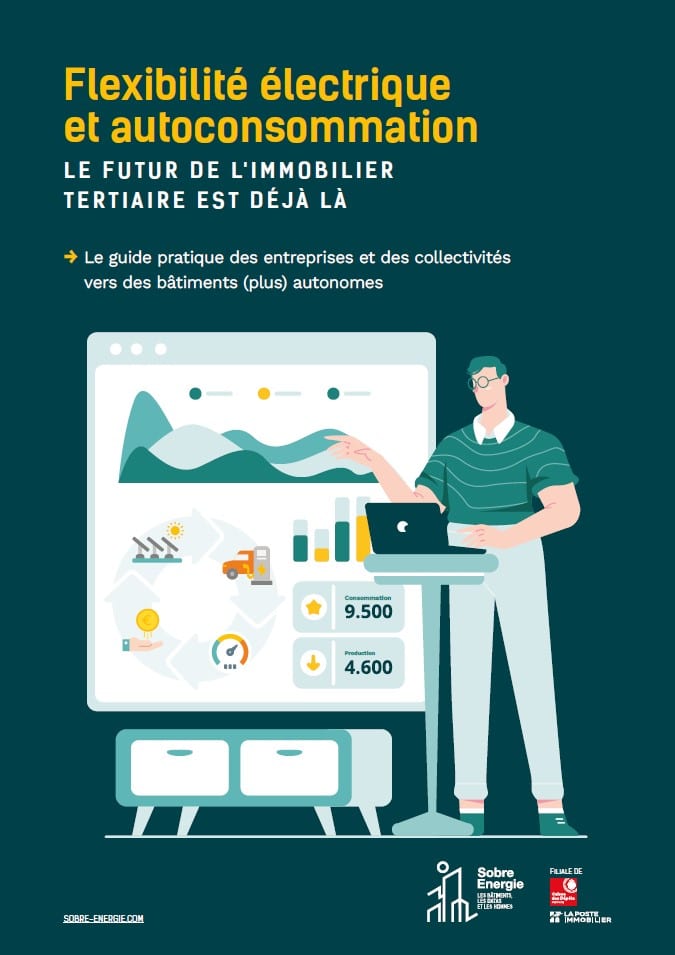Data centers: a dazzling development to supervise to control energy consumption
With the development of AI, data centers are developing strongly. What do its uses represent in terms of energy consumption? What levers to optimize your impacts? Sober Energy takes stock.
Spectacular growth in the number of data centers in France
The data centers, long concentrated in specific areas (Ile-de-France, Lyon), today are experiencing an unprecedented expansion throughout French territory. According to echoes, France had more than 200 data centers 3 years ago, almost 350 today, a growth of +75 % in just three years , according to the France Datacenter association.
In Marseille, development is so fast that the city has become the fifth world destination for the establishment of Data Centers*.
This explosion is explained by several factors:
- digitalization of companies and public services.
- The rise of artificial intelligence, cloud computing, video on demand and IoT.
- A national strategy of digital sovereignty (confidence cloud, cybersecurity).
This movement transforms the buildings housing these centers into strategic real estate assets . But it also raises strong energy concerns.
In energy data centers ... and regulated
Figures that arrest
According to a report by the IEA (International Energy Agency) published in April 2025:
- The data centers consumed 415 TWh of electricity in 2024
- This consumption should double by 2030, especially under the effect of AI and intensive calculation to reach 900 TWh, the equivalent of that of Japan currently
- By 2026, the only European data centers could represent continent's electricity demand
In France, the figures are just as meaningful.
According to the ADEME “Operat 2022-2024” report:
- Activities related to servers and IT represent barely 0.1 % of the declared tertiary areas , but 2.2 % of total energy consumption.
- The average consumption ratio reaches 2,477 kWh/m²/year, more than conventional offices.
A regulatory framework that applies fully
The data centers are subject to the tertiary decree (article 175 of the Elan law):
They must reduce their energy consumption by 40 % by 2030, 50 % by 2040 and 60 % by 2050 , compared to a reference year.
Each year, they must declare their consumption on the Operat , like any tertiary building> 1,000 m².
The Bacs decree, in force since 2021, also requires the installation of building technical management systems (GTB) to improve the performance of CVC systems.
Levers for action to reduce the energy impact of data centers
Value fatal heat
Air conditioners to cool the servers rooms generate a large amount of heat. This thermal energy can be:
- Recovered and reinjected in urban heat networks (RCU) or in neighboring buildings.
- Used to heat swimming pools, housing, agricultural greenhouses or public buildings.
The recent Ddadue law, adopted in April 2025, ensures, in French law, the effectiveness of the obligations of owners and operators of the data centers provided for by the European Directive 2023/1791 relating to energy efficiency:
- Data centers with a installed power greater than or equal to 1 megawatt must enhance the fatal heat they produce.
- Data centers whose installed power is greater than or equal to 500KW, must now transmit administrative, environmental and energy information relating to their exploitation on a digital platform set up by the European Commission. These same information must be made available to the public.
The sanctions can range from formal notice to a fine in the event of persistent non-compliance, with publication on the Internet of the administrative act pronouncing sanctions.
Key technical gestures to adopt:
- Adiabatic cooling, free cooling or cooling immersion.
- Ultra-effective redundant power supply (UPS, stinking <1.3).
- Automatic detection and extinction of inactive servers.
The PUE (Power Effectiveness Use) is a good indicator: going from 1.8 to 1.2 can divide by 2 non -it consumption.
Follow and pilot your consumption continuously
An advanced energy management system is essential for:
- Identify consumption anomalies.
- Compare interse performance.
- Pilot corrective actions.
Datamarc Neo solution recommended by the Sustainable Real Estate Observatory, makes it possible to:
- Automatically consolidate the energy data.
- Identify priority buildings where to make energy audits
- View differences in relation to the objectives of the tertiary decree.
